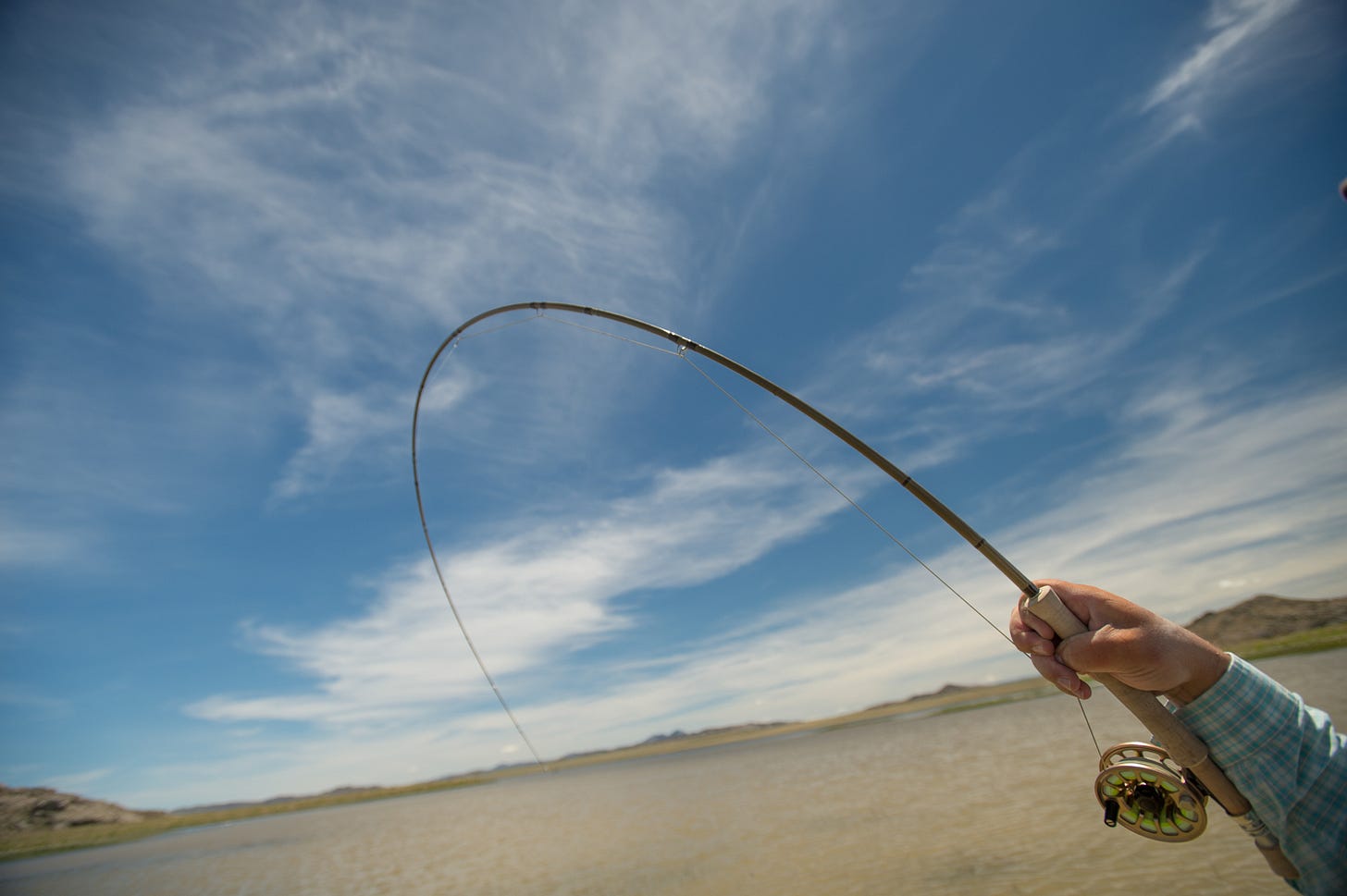Killing The Clock
The length of the casting stroke is a function of the length of the line being cast. The relationship works like this: short line, short stroke...
By John Juracek
While visiting the shop recently, I learned that one of my young colleagues, fresh out of college, would be teaching an even younger group of students how to cast a fly. I’ve always found my friend’s enthusiasm for fishing contagious, his willingness to help others admirable. Since I’d worked with him in prior years on the principles of casting, I thought perhaps the moment was right for a brief refresher.
I grabbed the shop’s indoor practice rod and made several casts–casts where the line rolled out in a wide, sloppy loop, with line tip and leader fluttering down and collapsing in a messy pile. I asked my friend to analyze and solve this problem, so that my ensuing casts would straighten out. (The inability to cast a straight line, on demand, is one of the most common problems in fly casting, afflicting not only beginners but often those with many years of experience. How to cast a straight line is one of the first things we should all be taught.)
After thinking it through, my friend concluded that my casting stroke was too long. He said I was taking the rod too far behind me on the backcast. “What should I do?” I asked. Boldly, he replied, “Stop your backcast at 12:00 o’clock.” So I did. And my next cast finished with the line tip and leader piling up again, but in a different way. This time they piled up because they were driven into the floor before the cast had time to straighten out. I repeated the cast. Same result–my line drove hard into the floor without straightening out. I looked at my friend. Not expecting this, he seemed unsure exactly how to proceed.
I stopped the exercise. I told him that his analysis was correct–my initial strokes were too long, I was indeed taking the rod too far back on the backcast. But even as he had correctly diagnosed the problem, his proffered solution–“stop the rod at 12:00 o’clock”–condemned my ensuing casts to failure. Now, my stroke was too short–I wasn’t taking the rod far enough back on the backcast.
Here’s how this works. The length of the casting stroke is a function of the length of the line being cast. The relationship works like this: short line, short stroke. Longer line, longer stroke. So every time we change the length of our line, we also change the length of our stroke. Consequently, there can be no fixed backcast position. The correct backcast position varies depending on the distance being cast. Could be 10:00 a.m., high noon, 3:00 p.m., or any time in between. In my case, it turned out the right position was about 1:00 o’clock. That resulted in my line turning over perfectly, straightening out just before settling gently to the floor.
My friend ultimately came to realize that he had offered up a stock answer to a problem with infinitely variable answers. When faced with this same situation myself, I said that I find it more productive to simply ask my students not to take the rod so far back. By not verbally specifying a particular “time”, but instead watching the line itself and adjusting to its behavior–lengthening or shortening the stroke, as required–students find the correct backcast position simply by feel, ingraining that position in their muscles as well as their mind. Good fly casting instruction requires concise, thoughtful communication. Knowledge alone, while necessary, is never enough.
In time, my friend is going to make an excellent teacher. I respectfully suggested to him that he continue to refine his delivery, learning how to say exactly what he means, and learning to recognize when he isn’t. That’s not easy, but it’s one of the things the best instructors always think about, one of the ways in which they stand apart.
John Juracek is a fly fisherman, writer and photographer from West Yellowstone, Montana. For twenty-some years he was a partner at Blue Ribbon Flies, a local fly shop, and is currently the head casting instructor at the School of Trout and Anglers Academy. His writing credits include Yellowstone: Photographs of an Angling Landscape, Fly Patterns of Yellowstone, Fishing Yellowstone Hatches and Fly Patterns of Yellowstone, Volume Two.
He is considered one of the sport’s expert fly casters and instructors and offers casting lessons for $100/hour at jjuracek@gmail.com or (406) 640-2828.






In teaching a new fly caster to cast nine foot fly rods on a trout stream, nearly 100% of the time, they will be casting short lengths of line. Nearly 100% of new fly casters go back to 3:00 when they start casting, in addition to not stopping the back cast. The advice to pause the back cast and obey the clock at around 1:00 o’clock is the simplest, best, easiest advice to follow when you’re new.